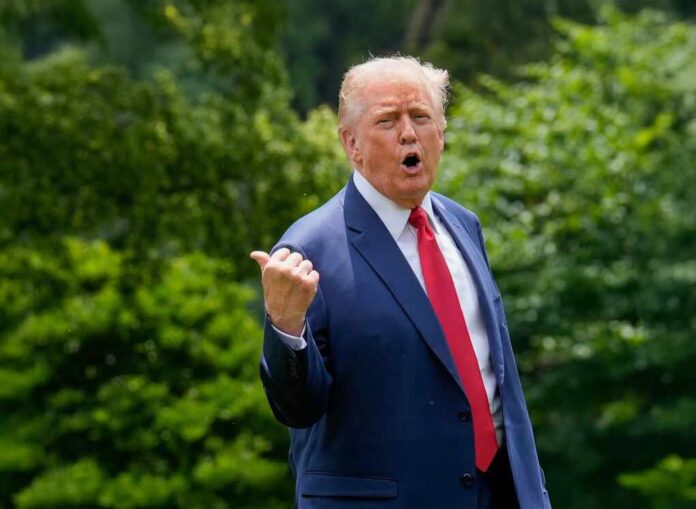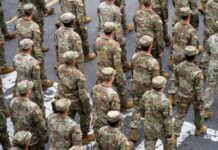
A viral photo of Donald Trump with “devil horns” ignites intense debate and reveals the power of social media in shaping political narratives.
Story Snapshot
- A photo of Trump with apparent “devil horns” goes viral, sparking online debate.
- The image is an optical illusion caused by a wall carving during a White House meeting.
- Social media platforms amplify the controversy, influencing public perception.
- The incident highlights the challenges of managing political narratives in the digital age.
Viral Photo Sparks Political Controversy
On October 9, 2025, a photo taken during a cabinet meeting at the White House depicted former President Donald Trump with what appeared to be “devil horns,” due to a coincidental wall carving behind him. This optical illusion quickly went viral, drawing a wide range of reactions online. While some found humor in the image, others saw it as a deliberate attempt to mock Trump, sparking significant debate across social media platforms.
The image’s rapid spread illustrates the power of social media in amplifying political narratives, often without context. This incident is not the first of its kind; political figures have frequently been subjects of manipulated or misinterpreted images that ignite public discourse. Social media platforms like Facebook and X (formerly Twitter) have become breeding grounds for such viral content, further polarizing public opinion and complicating the management of political narratives.
Watch: Trump’s Devil Horns
Background and Historical Context
The depiction of devil horns has roots in medieval European folklore and has long been a common symbol in Western culture. Such imagery in political contexts is not novel but has been significantly amplified by the rise of social media. The speed at which images can now go viral without context has increased scrutiny on political figures’ public appearances, as seen with this photo of Trump. The meeting itself was focused on significant topics, including achievements in international diplomacy, such as the Israel-Hamas peace deal.
The photo’s controversy underscores the challenges politicians face in maintaining a positive public image in the digital age. Trump’s team, focused on managing public perception, must navigate these digital waters carefully. Social media’s role in amplifying content presents both opportunities and risks for political figures, influencing how narratives are shaped and perceived by the public.
Implications and Expert Insights
The incident has both short-term and long-term implications for Trump’s public image and political influence. In the short term, the controversy may impact his political activities and public perception. Long-term, it highlights the increasing power of social media in shaping public narratives and the challenges of managing them effectively.
As the debate continues, it serves as a reminder of the broader societal trends and political polarization fueled by social media. The incident underscores the importance of scrutinizing viral content critically and understanding the potential for manipulation and misinterpretation in digital media. For Trump’s supporters and detractors alike, the photo represents a microcosm of the ongoing challenges in navigating political discourse in today’s digital landscape.
Sources:
Demon Sighting Photo Goes Viral on Facebook
Donald Trump with Devil Horns: Truth Behind Viral White House Photo of President
Drudge Report Archive on Viral Trump Photo

























